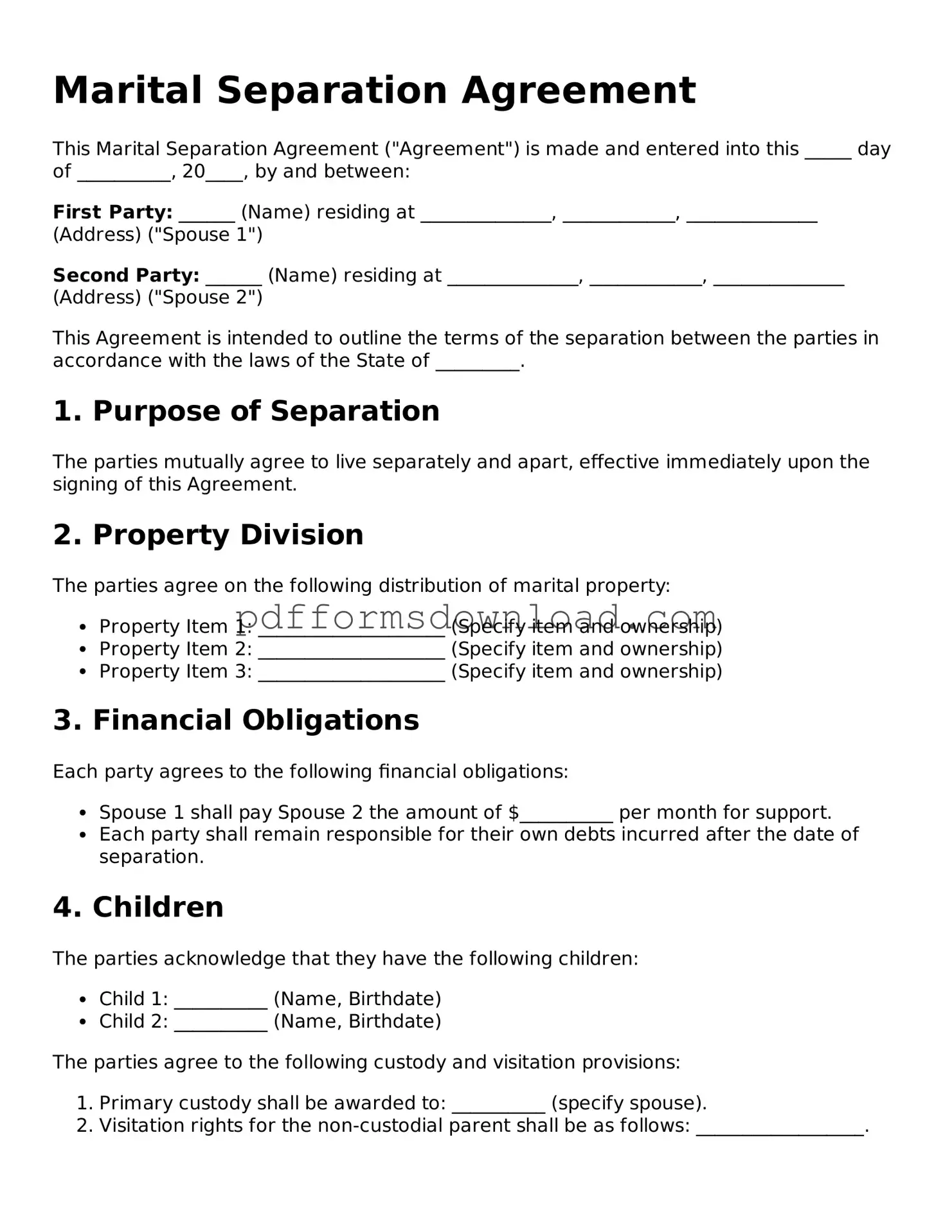What is a Marital Separation Agreement?
A Marital Separation Agreement is a legal document that outlines the terms and conditions agreed upon by spouses who wish to live separately while remaining legally married. This agreement typically addresses issues such as asset division, child custody, and support obligations.
Why should I create a Marital Separation Agreement?
This agreement can help clarify the rights and responsibilities of each spouse during the separation period. It can reduce misunderstandings and conflicts, providing a clear framework for both parties to follow until a divorce is finalized or reconciliation occurs.
What topics are typically covered in a Marital Separation Agreement?
Common topics include division of property and debts, child custody arrangements, visitation schedules, child support, spousal support, and health insurance responsibilities. Each agreement can be tailored to fit the unique circumstances of the couple.
Is a Marital Separation Agreement legally binding?
Yes, once both parties sign the agreement, it becomes legally binding. However, it is advisable for each spouse to consult with a legal professional to ensure that the agreement complies with state laws and adequately protects their interests.
Can a Marital Separation Agreement be modified?
Yes, modifications can be made if both parties agree to the changes. It is important to document any modifications in writing and have both parties sign the updated agreement to maintain its enforceability.
How does a Marital Separation Agreement affect divorce proceedings?
A Marital Separation Agreement can streamline the divorce process by addressing many issues upfront. Courts often look favorably on agreements that were mutually decided, which can lead to a smoother resolution during divorce proceedings.
Do I need a lawyer to create a Marital Separation Agreement?
While it is not legally required to have a lawyer, consulting one is highly recommended. A legal professional can help ensure that the agreement is fair, comprehensive, and compliant with state laws.
What happens if one spouse does not adhere to the Marital Separation Agreement?
If one spouse fails to comply with the terms of the agreement, the other spouse may seek legal enforcement through the court system. This could involve filing a motion to enforce the agreement or seeking modifications if necessary.
Can I use a template for a Marital Separation Agreement?
Templates can be helpful as a starting point, but it is important to customize the agreement to reflect your specific situation. Ensure that any template used complies with your state’s laws and addresses all necessary issues.
What should I do if my spouse does not agree to a Marital Separation Agreement?
If your spouse is unwilling to negotiate or agree to a separation agreement, consider seeking mediation or legal advice. A neutral third party can help facilitate discussions and work towards a mutually acceptable resolution.
